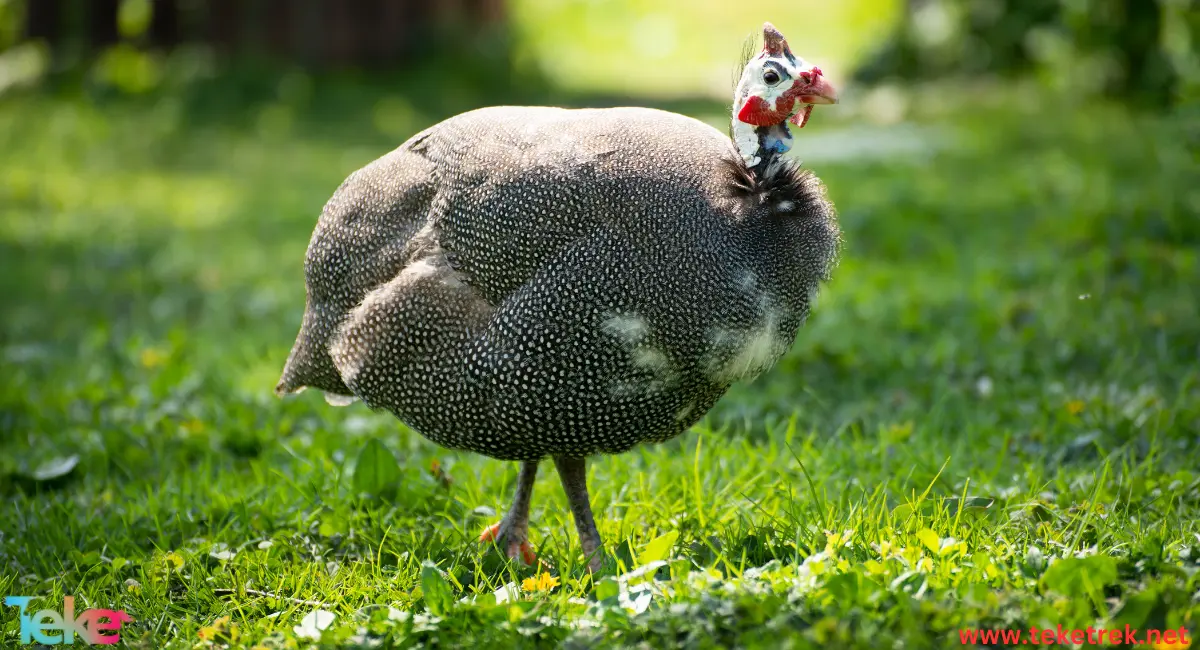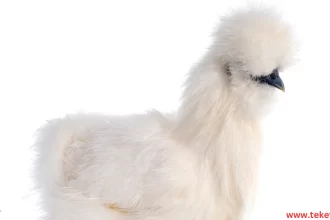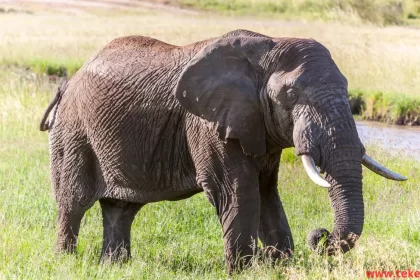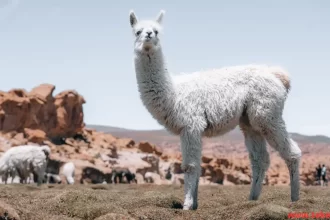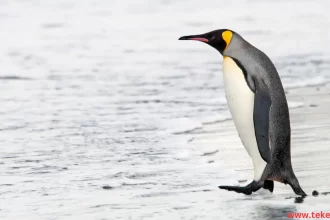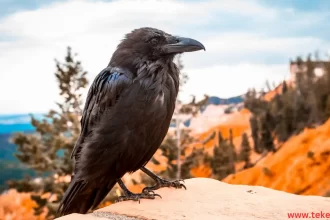The Turkey bird is one of the unique animals, raised for its meat and eggs. It is characterized by a massive body and colorful feathers with bright colors, and the males are distinguished by the presence of a crown on their heads. The large and stunning turkeys have increasingly become a common sight around the world. Below we talk more about the turkey on TekeTrek website, where they are found, and the most important facts about their life.
Introduction paragraph about Turkey bird
- The Turkey bird is a large bird from the genus Meleagris, native to North America, and is among the largest birds in its ranges. There are two types: the wild turkey (Meleagris gallopavo) found in eastern and central North America, and the ocellated turkey (Meleagris ocellata) found in the Yucatan Peninsula in Mexico.
- As with many large ground-feeding birds (order Galliformes), the male is larger in size and more colorful than the female.
Evolution of Turkeys
- The first turkeys evolved in North America over 20 million years ago, and the wild turkey is one of the two domesticated birds living in the New World. In the early 16th century, European explorers brought wild turkeys to their homeland from Mexico, where the indigenous people had domesticated the birds for centuries. The turkey quickly became popular on European menus due to its large size and rich taste from its diet of wild nuts. When English settlers arrived on the Atlantic coast, they brought domesticated turkeys with them.
- The popularity of the wild turkey led to a sharp decline in its numbers, but it has recovered and now occurs in every state except Alaska.
Habitats of Wild Turkeys
- Flocks of wild turkey’s roam around forests and green spaces, where male suitors puff themselves up in feathered displays.
- Wild turkeys wake up early in the morning, foraging for food in green spaces, field edges, and along roadsides. They particularly favor forest edges with oak and walnut trees.
- During spring and summer, males emit distinctive, high-pitched calls and cover significant distances. You might find wild turkeys on the ground, but don’t be surprised if you encounter a group of them soaring high to their roosts at day’s end.
- If you have a large area near the forest, you can attract wild turkeys by planting walnut or blackberry trees. Some people also lure them by scattering birdseed or corn in their fields. However, be cautious about attracting unwanted visitors like rodents.

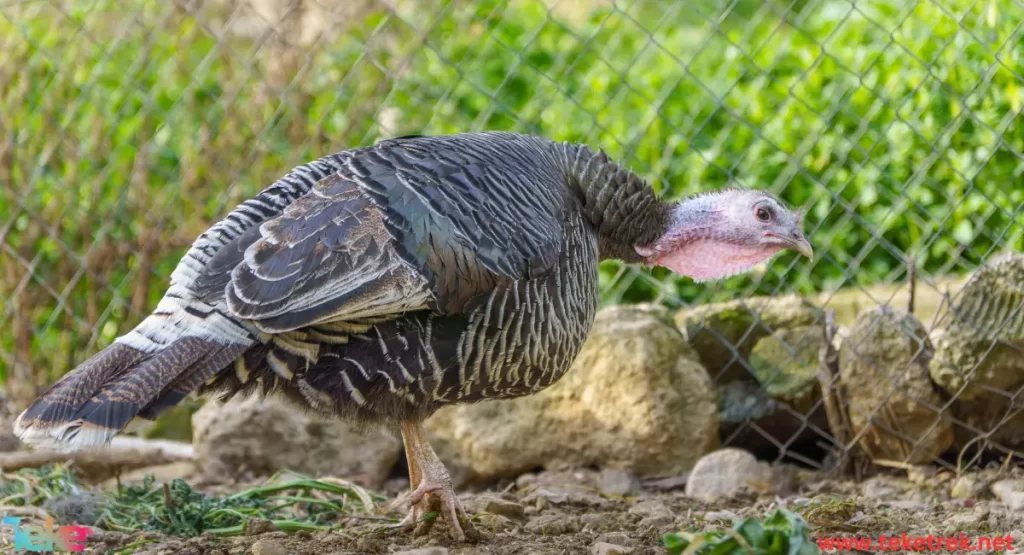
Wild Turkey food
Wild turkeys feed on various wild animals depending on the season. In the warmer months of spring and summer, they primarily consume grains like wheat and corn, as well as small animals like grasshoppers, spiders, worms, and lizards. During the colder months of fall and winter, they rely on small fruits and nuts such as grapes, berries, and walnuts. They continuously search for food during sunrise and sunset hours. Domesticated turkeys, on the other hand, consume commercial feed designed for growth and supplement their diet with grains like corn.
Fascinating Facts About Turkeys
- Thanksgiving Symbol:
In the United States, the turkey is a prominent symbol of Thanksgiving, often consumed as the main dish during this national holiday.
- Lean Protein:
Turkey meat is rich in protein and low in fat, with a high muscle content, making it a healthy choice for various dietary plans.
- Colorful Plumage:
Wild turkeys exhibit a wide range of feather colors, from brown to black, and orange to white, making them beautiful and eye-catching birds.
- Eggs and Recipes:
Besides its famous meat, turkey eggs are delicious and can be used in various tasty recipes, making them an important food source in many cultures.
Wild turkeys have high running speed, reaching up to 25 miles per hour, which allows them to escape danger quickly.
- Behaviors of wild turkeys:
Wild turkeys sleep in trees, spending most of their time on the ground. However, when it’s time to rest, they fly up into the trees. Because they don’t see well at night and to protect themselves from predators, they roost at dusk and fly down at dawn.
Wild turkeys can change their color, allowing their emotions to be discerned through the color of their heads. The colors shift from red to blue to white based on their excitement or calmness. The more intense the colors, the stronger their emotions.
Wild turkeys exhibit personal care behaviors, including dust bathing, sunbathing, and feather maintenance. During dust bathing, they lower themselves onto their bellies or sides, flap their wings, and cover themselves with dirt. This removes accumulated debris from their feathers and also clogs small pores that could harbor parasites like lice and bacteria, while ensuring the removal of loose feathers.
Sunbathing in wild turkeys involves basking in sunlight for both their upper and lower halves. This natural behavior helps filter the oil they produce, which spreads across their feathers and simultaneously dries them from rain showers.
Domestic turkeys cannot fly, whereas wild ones can fly short distances. When faced with immediate danger, wild turkeys can fly up to a quarter of a mile at speeds of up to 55 miles per hour in short bursts.
Turkeys emit a variety of sounds, including “gobbles,” “clucks,” and kee-kees.Their behavior towards humans and pets in residential areas can be aggressive, and habituated wild turkeys may attempt to assert dominance over people or even attack them.
Mating in turkeys
- Male turkeys (toms) possess snoods, fleshy protuberances that hang from the top of their beaks and are specialized for mating. When relaxed, a tom’s snood appears pale and measures 2-3 centimeters. However, during courtship displays, the snood fills with blood, turning redder and extending several centimeters, dangling below the beak.
- According to research in ornithology journals, female turkeys prefer Long-bearded males can also be used to predict the winner in a competition between two males.
- Wild turkeys male do not give parental care. The chicks follow the female for several days to feed them and teach them how to find food. As the chicks grow, they gather in groups consisting of several hens and their young.
- The turkey male is knowed as a “tom” but the female as a “hen”.

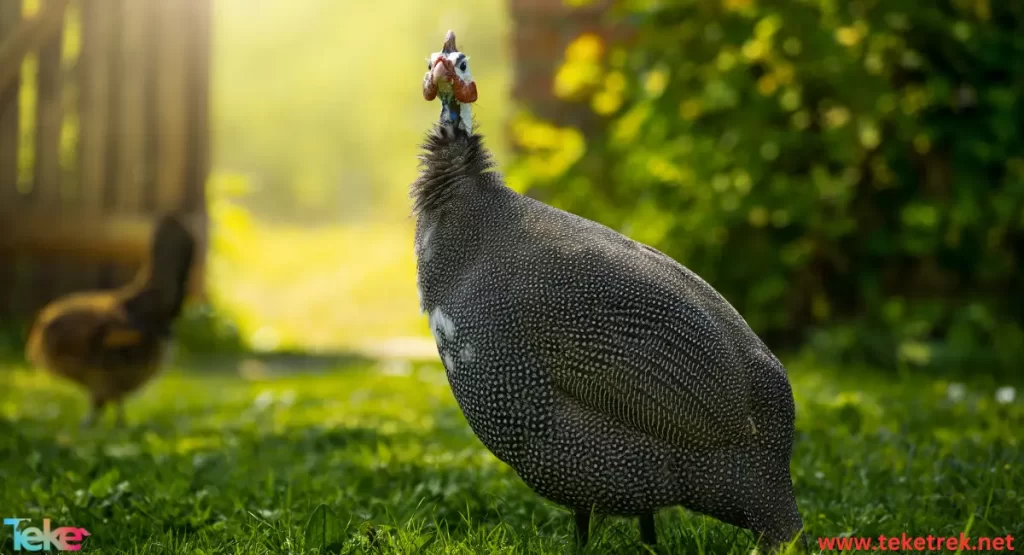
Notable facts about turkeys
- Gender Identification:
The gender of a turkey can be determined by examining their droppings. Turkey male droppings are J-shaped, but female droppings are spiral-shaped.
- Superior Vision:
Turkeys see better than humans, with vision three times sharper. They can perceive colors and have a field of view covering 270 degrees.
- Turkey Consumption:
Many people who avoid red meat turn to turkey. In 2020, per capita turkey consumption reached approximately 16 pounds
- Fossil Record:
Due to their large size, robust bones, and long-standing popularity as a dinner centerpiece, turkeys have a well-documented fossil record compared to most other birds. Fossilized remains of turkeys have been discovered throughout the southern United States and Mexico, some dating back over 5 million years.**
The most frequently asked questions about turkey
- Is turkey meat healthy?
Turkey meat is useful in completing vital processes in the body. This is because it contains important elements such as iron, zinc, phosphorus, and protein to carry out these vital processes. It helps increase the body’s energy, activity and vitality because it contains niacin and vitamin B.
- Is turkey better or chicken?
Chicken and turkey meat are not only a rich source of protein, but they also contain many other important nutrients. Chicken meat is considered low in fat and rich in vitamins and minerals, while turkey meat is characterized by a high percentage of protein and iron.
- Why is the name turkey called?
Tracing the name alone leads to a vicious circle, especially since his name in Arabic is “Rumi,” in reference to the Roman Empire in southeastern Europe, or “Abyssinian” in some Arab regions.
- How old is a turkey when killed?
Turkey life span ranges between 14 to 18 weeks.
In conclusion, it’s worth noting that Benjamin Franklin preferred the turkey over the bald eagle. In a letter to his daughter, he described it as a “bird of bad moral character” because it steals from other birds. He also characterized it as a “more respectable bird” and “a true original native of America.”

